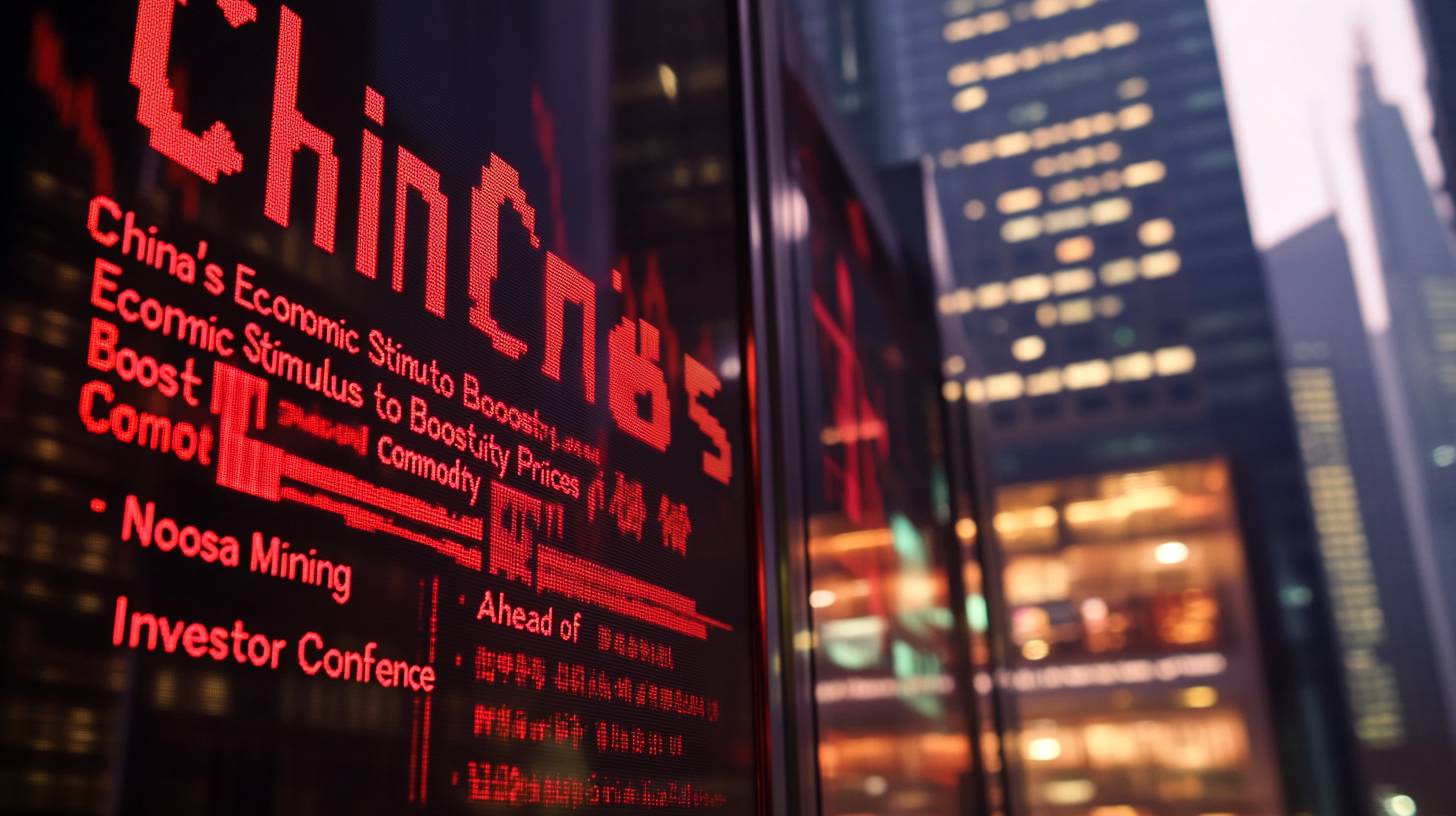
Impact of China’s stimulus initiative on commodity markets
The central bank of China has introduced a significant stimulus initiative aimed at reinforcing its economy, which faces pressures from domestic and international challenges. This initiative features a decrease in interest rates, representing the most extensive set of actions since the pandemic. Such a step is anticipated to influence global commodity markets positively, particularly those associated with industrial production and infrastructure growth.
Essential commodities like iron ore, copper, and coal are expected to experience heightened demand as China accelerates its infrastructure initiatives and manufacturing capacity. Historically, China’s economic strategies have wielded considerable power over commodity pricing due to its status as the foremost global consumer of raw materials. With this stimulus, a resurgence in commodity prices can be expected, which have faced downward pressure amid global economic uncertainties and diminished demand from China in recent times.
This is particularly promising news for Australian miners and exporters. As China’s largest trading ally, an increase in demand for commodities is likely to result in elevated revenues for firms engaged in the extraction and exportation of these resources. Investors should monitor closely those companies with considerable reliance on iron ore, copper, and other critical materials, as they are poised to benefit from the forecasted price hikes.
“This stimulus initiative might transform the commodities landscape, especially for Australian miners who have been anticipating a trigger to spark demand,” remarked a market analyst.
Beyond the direct influence on commodity costs, the interest rate cut could result in a devaluation of the yuan, rendering Chinese exports more competitive on the world market. This, in turn, could amplify the quest for raw materials as manufacturers increase output to accommodate rising global orders.
Expected influences on the Noosa Mining Investor Conference
The forthcoming Noosa Mining Investor Conference, slated for November, is likely to witness increased interest and participation, primarily propelled by the latest developments in China. With the stimulus initiative poised to elevate commodity prices, Australian mining firms will probably be in the limelight, drawing in institutional and retail investors eager to tap into potential sector advantages.
Traditionally, the Noosa Mining Investor Conference has served as a vital setting for both emerging and established mining companies, particularly those involved with significant commodities like iron ore, copper, and lithium. This year’s conference may witness greater engagement from firms keen to showcase their growth potential amid China’s revitalized demand for raw materials. Investors will be eager for updates from companies directly linked to the Chinese market, along with those positioned to reap benefits from the broader global recovery.
Furthermore, the timing of the stimulus initiative aligns favorably with the conference, offering a new narrative for companies to share with prospective investors. With an anticipated rise in commodity prices, many mining enterprises could leverage the platform to unveil new projects, expansions, or partnerships designed to exploit favorable market conditions. This may spark a heightened pace of deal-making activity as companies aim to secure funding or strategic collaborations to expedite their growth strategies.
“The Noosa Mining Investor Conference is poised to be a crucial event for the industry, especially as China’s stimulus initiative supplies a vital boost for commodity prices,” stated a senior mining executive.
For investors, the conference symbolizes a chance to glean insights into the strategies adopted by principal players in the mining sector and to evaluate which companies are optimally positioned to benefit from the anticipated demand resurgence. Given that the Australian mining sector significantly contributes to the economy, any positive advancements in commodity markets could exert extensive effects on both the stock market and overall economic growth.

